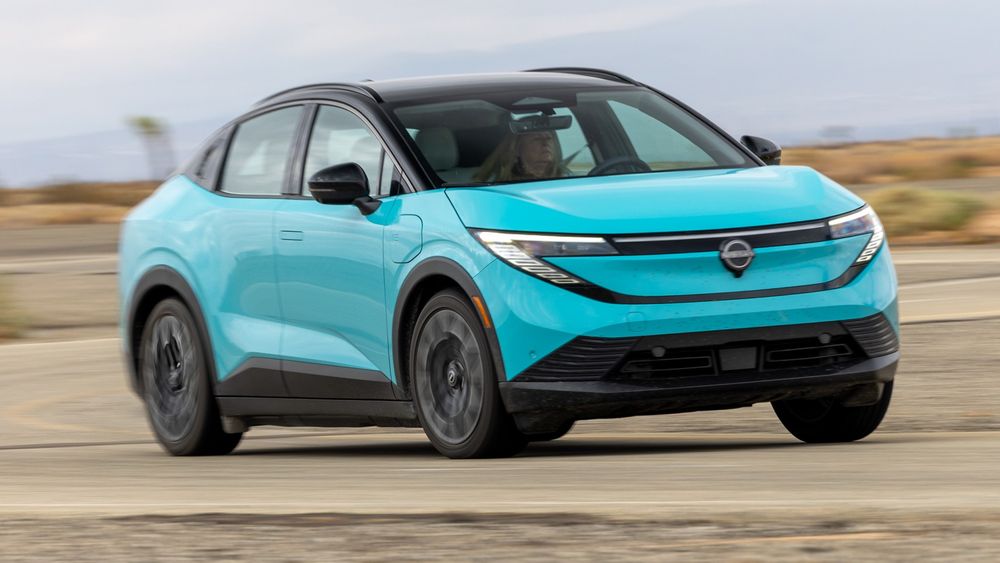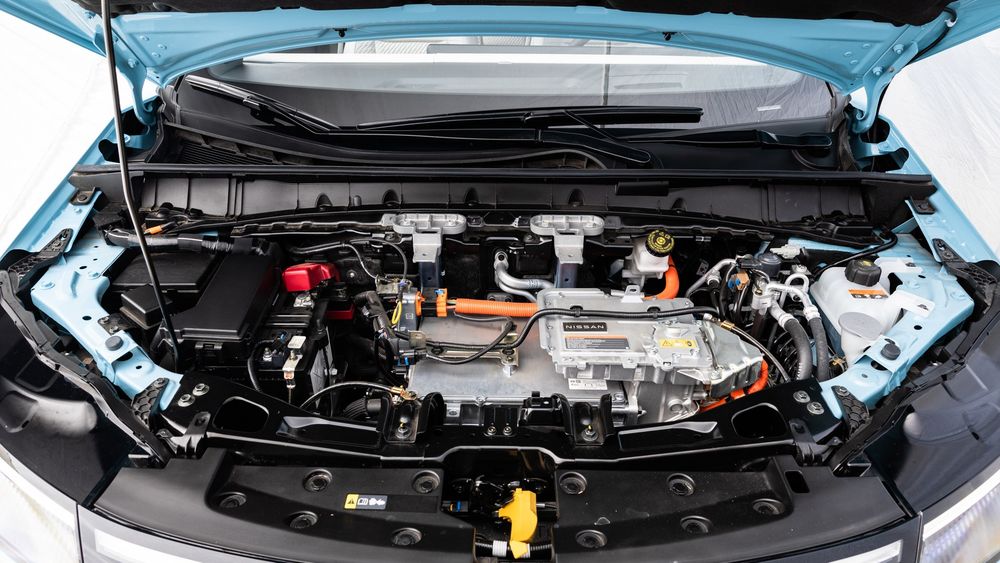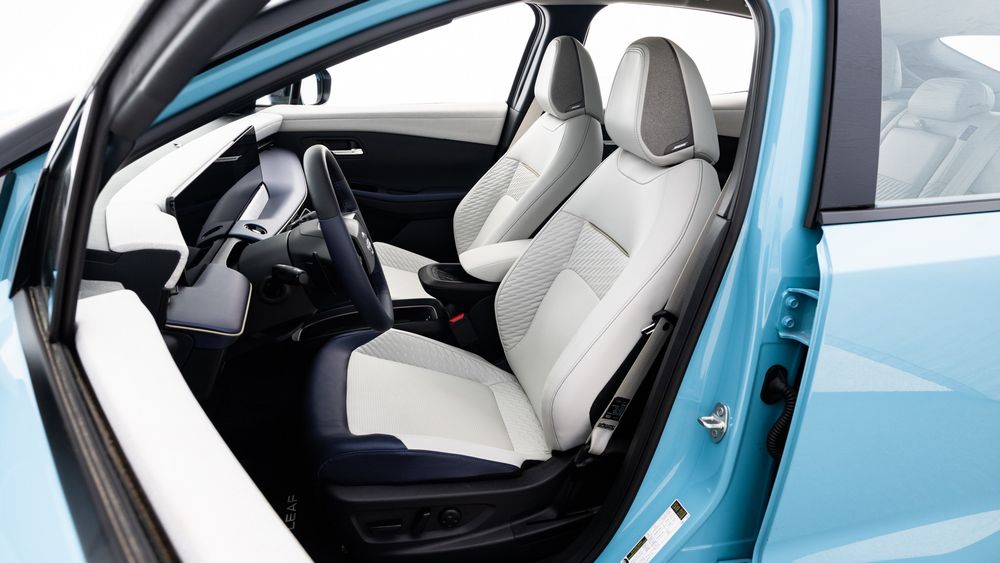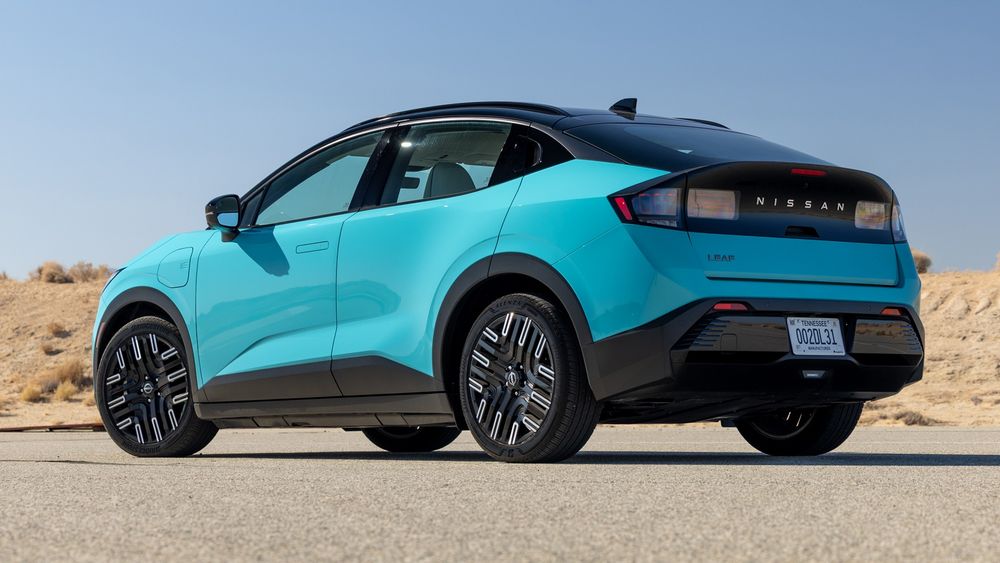Tested: The New 2026 Nissan Leaf Is Different in Every Way—Except One
Nissan’s latest Leaf is improved in *almost* every respect.
Pros
- Goes farther
- Charges faster
- Looks way better
Cons
- Best features paywalled
- Cramped interior
- Prices itself out of contention
There’s a business school case study to be written about how Nissan squandered its first-mover advantage with the original Leaf. Left on the market far too long before being replaced with basically the same car, which was also left on the market too long, any benefit the Leaf enjoyed being the first and least expensive mass-market EV in America evaporated a long time ago. Now, the do-over 2026 Nissan Leaf is finally here, and from nearly every indication, it’s entirely new. That is, save for its instrumented performance.
0:00 / 0:00
More than a few cars running around today being marketed as “all-new” are simply little more than an evolution of the prior model. The Leaf isn’t one of them. Riding on a new platform with a new, liquid-cooled battery, new powertrain, new bodywork, new interior, new charging ports, and so on, it’s an abrupt change in direction from the last Leaf. Looking at them, you’d have no idea they’re related. And really, that’s for the best.
The first Leaf looked like a science project and the second a rather anonymous hatchback. This one, though, looks sharp. Nissan is calling it an SUV now. It isn’t, but it does have an SUV coupe look to it that’s still popular, punctuated by eye-catching design details. The nerds in us love the obscure Ni-San (two-three in Japanese) references in the double and triple rectangles on the charging port doors and in the taillights. The Leaf is no longer the cheap option; it’s the affordable option you’ll want to be seen in.
Range Performance
Despite getting larger and heavier, the new Leaf boasts the greatest driving range in its 15-year history. The top-shelf 2026 Leaf Platinum+ model we tested has the shortest EPA-rated range of the new line at 259 miles, but that’s still 47 miles better than the best of the last generation. What’s more, during our MotorTrend Road Trip Range test—which runs the car at a constant 70 mph from 100 percent battery down to 5 percent—the Platinum+ made it 243 miles, a very good result.
That's also staggeringly better than the last Leaf we tested, a 2024 model that only made it 169 miles in our test, significantly below its 212-mile EPA rating.
Charging Performance
No longer saddled with the HD-DVD of charging ports, CHAdeMO, the new Leaf gets a Tesla-developed NACS port on the passenger-side front fender for fast charging. It also gets a J1772 port on the driver’s side front fender for Level 1 and Level 2 home charging, even though NACS is capable of all three. Why? Because Nissan switched plans from CCS to NACS at the last minute and ran out of time to finish the engineering work necessary to enable the NACS port to handle multiple charge levels. Still, you’ll never have to worry about finding one of the last remaining CHAdeMO public charging stations ever again.
All that said, it now pulls down a maximum of 150 kW on a fast charger, not especially brisk these days but on par with other affordable EVs. It’s also triple that of what the old car could muster, so it's no surprise charge times have come down substantially. Charging from 5 percent to 80 percent took 36 minutes, down from 52 minutes with the old car, with 113 miles of range added in the first 15 minutes and 171 miles added by the 30-minute mark. The old car could only manage 79 miles added in half an hour.
Performance Performance
Given that it’s nearly 500 pounds heavier than before with the same peak horsepower from a new motor and only 11 lb-ft of additional torque, it’s rather impressive that the new Leaf’s instrumented testing hasn’t changed much from generation to generation. Everyone who drove it thought it felt peppier than before, but the GPS-based stopwatch tells the truth: The new car is one-tenth of a second slower to 60 mph. Now, 6.8 seconds to 60 mph is still a very respectable number for an inexpensive car designed for range and efficiency, and if the driving experience is improved enough to impress our editors, so much the better.
Braking performance is, unfortunately, a bit worse at 129 feet to a stop from 60 mph. That’s up from 122 feet previously and could be due to the weight, tires, brakes, or some combination thereof. It’s still an acceptable stopping distance and not at all the source of our ire when it comes to the braking system.
That’s reserved for Nissan’s decision to replace its one-pedal driving and regenerative braking technology with the new multi-level e-Pedal system. We’re fine with multiple user-selectable regen braking levels so long as one of them still brings the car to a stop, and e-Pedal doesn’t. Worse, it does that obnoxious thing where it moves the brake pedal automatically without you touching it.
Back on the positive side, Nissan promised to make the new Leaf handle better, and, on paper, it delivered. This one pulls an 0.81 average lateral g on our skidpad, up from 0.78 g previously. Figure-eight performance is likewise improved, with a 27.2-second lap at 0.67 average g from the old car’s 27.9 seconds at 0.63 g.
Here, again, the numbers don’t match our subjective opinions. Most editors thought the new Leaf drove fine but didn’t find it especially exciting or engaging in a corner like Nissan promised. We also found its handling behavior deteriorated noticeably if the corner had any bumps in it.
Ownership Performance
So far, so goodish. But where the new Leaf struggles the most is in the execution of the everyday details. The interior is, in a word, small. Our taller editors found the front row to be a bit on the tight side, and even the shorter editors thought the back seat was cramped. We did like the fancy electrochromic sunroof, which turns from opaque to clear in segments, though only the top trim gets that.
That speaks to a larger issue we have. All the best stuff is paywalled into the upper trim levels. There’s full Google integration, including EV necessities like an en-route charging planner, but it’s only available on the more expensive trims and is only included for a year before you get hit with a subscription fee. Meanwhile, if you live somewhere cold, you’ll have to pay extra for a battery heater so your range doesn’t plummet in the winter.
Worth It?
As of this writing, the cheapest Leaf is the cheapest EV you can buy in America. If you can live without all the best features, it’s a good buy in isolation. The problem is, there’s a Chevrolet Equinox EV at the next lot over that goes a bit farther on a full battery, charges only a little slower, has similar performance and more space inside, and doesn’t gatekeep its technology—for similar money. In fact, it offers better technology in Super Cruise.
Then there’s the matter of the returning Chevrolet Bolt. It doesn’t go as far on a charge and probably won’t be as quick as the Leaf, but it’s cheaper, charges faster, has more space, and it also doesn’t gatekeep its technology. It, too, offers Super Cruise as an option and can even stream video when parked, ideal for charging stops.
If you need a stylish and inexpensive EV now, the Nissan Leaf has never been better. But if you’re looking for the best inexpensive EV, it falls a little short.
Were you one of those kids who taught themselves to identify cars at night by their headlights and taillights? I was. I was also one of those kids with a huge box of Hot Wheels and impressive collection of home-made Lego hot rods. I asked my parents for a Power Wheels Porsche 911 for Christmas for years, though the best I got was a pedal-powered tractor. I drove the wheels off it. I used to tell my friends I’d own a “slug bug” one day. When I was 15, my dad told me he would get me a car on the condition that I had to maintain it. He came back with a rough-around-the-edges 1967 Volkswagen Beetle he’d picked up for something like $600. I drove the wheels off that thing, too, even though it was only slightly faster than the tractor. When I got tired of chasing electrical gremlins (none of which were related to my bitchin’ self-installed stereo, thank you very much), I thought I’d move on to something more sensible. I bought a 1986 Pontiac Fiero GT and got my first speeding ticket in that car during the test drive. Not my first-ever ticket, mind you. That came behind the wheel of a Geo Metro hatchback I delivered pizza in during high school. I never planned to have this job. I was actually an aerospace engineering major in college, but calculus and I had a bad breakup. Considering how much better my English grades were than my calculus grades, I decided to stick to my strengths and write instead. When I made the switch, people kept asking me what I wanted to do with my life. I told them I’d like to write for a car magazine someday, not expecting it to actually happen. I figured I’d be in newspapers, maybe a magazine if I was lucky. Then this happened, which was slightly awkward because I grew up reading Car & Driver, but convenient since I don’t live in Michigan. Now I just try to make it through the day without adding any more names to the list of people who want to kill me and take my job.
Read More




